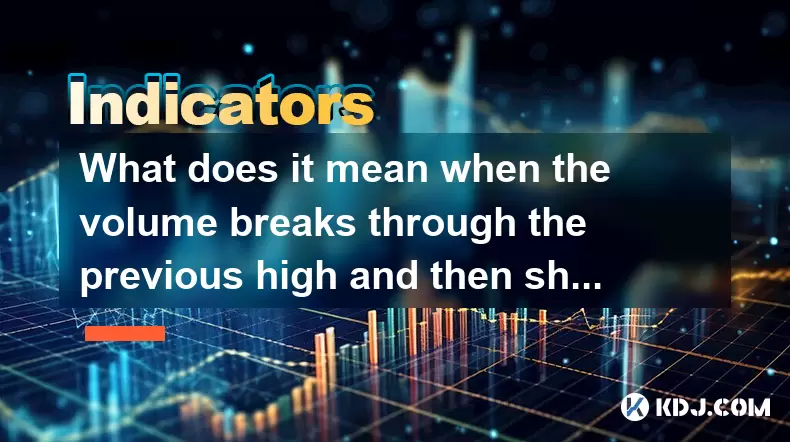-
 Bitcoin
Bitcoin $118100
-0.44% -
 Ethereum
Ethereum $3585
5.43% -
 XRP
XRP $3.434
5.65% -
 Tether USDt
Tether USDt $1.000
0.02% -
 BNB
BNB $743.8
3.89% -
 Solana
Solana $178.7
3.84% -
 USDC
USDC $1.000
0.03% -
 Dogecoin
Dogecoin $0.2381
12.81% -
 TRON
TRON $0.3270
3.62% -
 Cardano
Cardano $0.8315
4.93% -
 Hyperliquid
Hyperliquid $44.51
-4.42% -
 Stellar
Stellar $0.4710
1.52% -
 Sui
Sui $3.896
-2.51% -
 Chainlink
Chainlink $18.09
6.98% -
 Hedera
Hedera $0.2681
9.31% -
 Bitcoin Cash
Bitcoin Cash $516.7
4.83% -
 Avalanche
Avalanche $23.95
6.96% -
 Shiba Inu
Shiba Inu $0.00001490
5.67% -
 UNUS SED LEO
UNUS SED LEO $8.966
0.80% -
 Toncoin
Toncoin $3.294
4.39% -
 Litecoin
Litecoin $105.4
4.69% -
 Polkadot
Polkadot $4.356
5.30% -
 Uniswap
Uniswap $10.29
17.25% -
 Monero
Monero $327.9
-3.04% -
 Bitget Token
Bitget Token $4.942
4.33% -
 Ethena USDe
Ethena USDe $1.001
0.08% -
 Pepe
Pepe $0.00001348
2.17% -
 Dai
Dai $1.000
0.02% -
 Aave
Aave $320.8
0.58% -
 Bittensor
Bittensor $411.8
-4.07%
What does it mean when the volume breaks through the previous high and then shrinks and falls back? When is the buying point?
A volume breakout followed by a pullback may signal either consolidation or reversal, depending on price action, key support levels, and volume trends.
Jun 29, 2025 at 06:56 pm

Understanding Volume Breakouts and Retracements in Cryptocurrency Trading
In the world of cryptocurrency trading, volume plays a critical role in confirming price movements and predicting potential reversals or continuations. When the trading volume breaks through a previous high, it often signals strong market interest and can be interpreted as a bullish sign. However, when this is followed by a shrinkage in volume and a subsequent pullback in price, traders must carefully assess whether this represents a healthy consolidation or a potential reversal.
The key to understanding this scenario lies in analyzing the relationship between price action and volume. A breakout in volume typically indicates that institutional players or large investors are entering the market aggressively. If this happens on a positive candlestick with significant upward movement, it reinforces the strength of the move.
However, if the volume then shrinks and the price begins to fall back, it may suggest that the buying pressure has temporarily subsided. This could be due to profit-taking or a lack of sustained demand at higher levels. It's crucial not to interpret this as a bearish signal immediately without further confirmation from other indicators such as moving averages or RSI (Relative Strength Index).
Interpreting the Pullback After a Volume Surge
A pullback after a volume surge should be viewed within the context of the overall trend. If the price is still above key moving averages (like the 50-day or 200-day EMA), and the retracement doesn’t break major support levels, the uptrend might still be intact.
One important factor to consider is whether the decline in volume during the pullback is proportional to the decline in price. If the price drops significantly but volume remains low, it suggests that sellers aren't aggressively pushing the price down — which can be a positive sign for bulls.
Traders often use tools like Fibonacci retracement levels to identify potential areas where the price might find support during such a pullback. These levels help determine whether the pullback is shallow (suggesting strong momentum) or deep (indicating possible weakness).
Another thing to watch is the behavior of order books and liquidity pools, especially in decentralized exchanges. Sudden spikes in buy or sell walls can give insights into where large players are positioning themselves.
Identifying Potential Buying Opportunities
When evaluating a volume breakout followed by a pullback, identifying a valid buying point requires patience and technical analysis. The most common approach is to wait for a retest of a prior resistance level that now acts as support, combined with increasing volume.
Traders often look for candlestick patterns that indicate a potential reversal, such as a hammer, bullish engulfing, or morning star. These formations, when appearing near key support zones and accompanied by rising volume, can serve as entry points.
Some traders prefer to enter on a breakout above the high of the pullback candle, using stop-loss orders below the recent swing low to manage risk. Others might average in gradually as the price stabilizes and volume starts to increase again.
It’s also helpful to check on-chain metrics such as exchange inflows/outflows, whale transactions, and social sentiment to gauge whether accumulation is happening beneath the surface even while the price consolidates.
Key Technical Indicators to Confirm Entry Points
To enhance accuracy, traders should combine volume analysis with technical indicators that provide confluence. The Relative Strength Index (RSI) is particularly useful. If the RSI dips into oversold territory (below 30) during the pullback and then starts to rise again, it can signal that the downtrend is losing steam.
The MACD (Moving Average Convergence Divergence) can also help confirm momentum shifts. A bullish MACD crossover during the pullback phase may indicate that buyers are regaining control.
Using Bollinger Bands, traders can monitor volatility contractions during the pullback. A squeeze followed by a breakout can be a powerful signal, especially when aligned with volume dynamics.
Volume-based indicators such as On-Balance Volume (OBV) or Chaikin Money Flow (CMF) can offer additional insight. If OBV is trending upward despite the price pullback, it suggests hidden accumulation is taking place.
Risk Management During Consolidation Phases
Even when all signs seem to align, risk management remains critical. Entering too early or without proper stop-loss placement can lead to unnecessary losses if the pullback turns into a deeper correction.
Position sizing should be adjusted based on the trader’s confidence in the setup and the asset’s volatility. For example, more volatile cryptocurrencies like altcoins or newly launched tokens may require smaller position sizes compared to stable assets like Bitcoin or Ethereum.
Setting a tight stop-loss just below the recent support level helps protect capital while allowing room for normal price fluctuations. Traders should also define their take-profit targets in advance, either based on Fibonacci extensions or historical resistance levels.
Avoiding emotional decisions during consolidation phases is essential. Sticking to a predefined trading plan ensures consistency and reduces the likelihood of panic selling or FOMO-driven entries.
Frequently Asked Questions (FAQ)
Q: Can volume alone be used to determine a buying opportunity?
No, volume should always be analyzed in conjunction with price action and other technical indicators. While volume provides insight into market participation, it does not guarantee direction or sustainability of a move.
Q: How long should I wait before considering the pullback as a failed breakout?
There is no fixed time frame, but many traders observe whether the price can regain the breakout level within one or two candlesticks. If the price continues to trade below the breakout zone for an extended period without renewed volume, the initial momentum may have faded.
Q: Is it safe to buy during a volume-dry-up pullback?
Buying during a volume-dry-up pullback can be risky unless there are other confirming signals such as bullish candlestick patterns or divergence in momentum indicators. It’s safer to wait for a re-ignition of volume before committing capital.
Q: What tools can help track real-time volume changes?
Trading platforms like TradingView, Binance, or CoinMarketCap offer real-time volume tracking features. Additionally, tools like Glassnode or Santiment provide deeper on-chain analytics that include volume and holder behavior.
Disclaimer:info@kdj.com
The information provided is not trading advice. kdj.com does not assume any responsibility for any investments made based on the information provided in this article. Cryptocurrencies are highly volatile and it is highly recommended that you invest with caution after thorough research!
If you believe that the content used on this website infringes your copyright, please contact us immediately (info@kdj.com) and we will delete it promptly.
- Coinbase (COIN) Soars to All-Time High: What's Next?
- 2025-07-19 00:30:12
- DOGE, BlockDAG, and Vesting: What's Hot and What's Not in Crypto Right Now
- 2025-07-19 01:10:14
- Crypto Coins with 2025 Potential: BlockDAG and SUI Lead the Charge
- 2025-07-19 01:15:12
- Grass Cutting Hacks: Finding the Right Height for a Lush Lawn
- 2025-07-19 00:30:12
- RWA Token Revolution: Stage Point Europe Leads Crypto Real Estate Launch in Europe
- 2025-07-19 00:50:13
- Token Unlocks and AVAIL: July's Crypto Cliffhangers!
- 2025-07-19 00:50:13
Related knowledge

Advanced RSI strategies for crypto
Jul 13,2025 at 11:01am
Understanding the Basics of RSI in Cryptocurrency TradingThe Relative Strength Index (RSI) is a momentum oscillator used to measure the speed and chan...

Crypto RSI for day trading
Jul 12,2025 at 11:14am
Understanding RSI in the Context of Cryptocurrency TradingThe Relative Strength Index (RSI) is a momentum oscillator used to measure the speed and cha...

Crypto RSI for scalping
Jul 12,2025 at 11:00pm
Understanding RSI in the Context of Crypto TradingThe Relative Strength Index (RSI) is a momentum oscillator widely used by traders to measure the spe...

What does an RSI of 30 mean in crypto
Jul 15,2025 at 07:07pm
Understanding RSI in Cryptocurrency TradingRelative Strength Index (RSI) is a momentum oscillator widely used in cryptocurrency trading to measure the...

What does an RSI of 70 mean in crypto
Jul 13,2025 at 06:07pm
Understanding the RSI Indicator in Cryptocurrency TradingThe Relative Strength Index (RSI) is a widely used technical analysis tool that helps traders...

Does RSI work in a bear market for crypto
Jul 16,2025 at 01:36pm
Understanding RSI in Cryptocurrency TradingThe Relative Strength Index (RSI) is a momentum oscillator used by traders to measure the speed and change ...

Advanced RSI strategies for crypto
Jul 13,2025 at 11:01am
Understanding the Basics of RSI in Cryptocurrency TradingThe Relative Strength Index (RSI) is a momentum oscillator used to measure the speed and chan...

Crypto RSI for day trading
Jul 12,2025 at 11:14am
Understanding RSI in the Context of Cryptocurrency TradingThe Relative Strength Index (RSI) is a momentum oscillator used to measure the speed and cha...

Crypto RSI for scalping
Jul 12,2025 at 11:00pm
Understanding RSI in the Context of Crypto TradingThe Relative Strength Index (RSI) is a momentum oscillator widely used by traders to measure the spe...

What does an RSI of 30 mean in crypto
Jul 15,2025 at 07:07pm
Understanding RSI in Cryptocurrency TradingRelative Strength Index (RSI) is a momentum oscillator widely used in cryptocurrency trading to measure the...

What does an RSI of 70 mean in crypto
Jul 13,2025 at 06:07pm
Understanding the RSI Indicator in Cryptocurrency TradingThe Relative Strength Index (RSI) is a widely used technical analysis tool that helps traders...

Does RSI work in a bear market for crypto
Jul 16,2025 at 01:36pm
Understanding RSI in Cryptocurrency TradingThe Relative Strength Index (RSI) is a momentum oscillator used by traders to measure the speed and change ...
See all articles

























































































